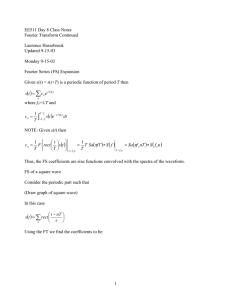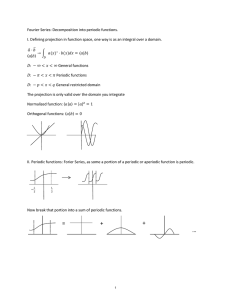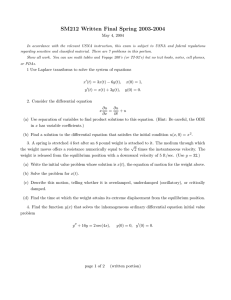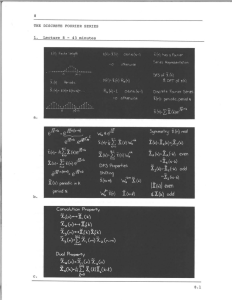Math 3150-4 – Midterm 1 – review sheet
advertisement
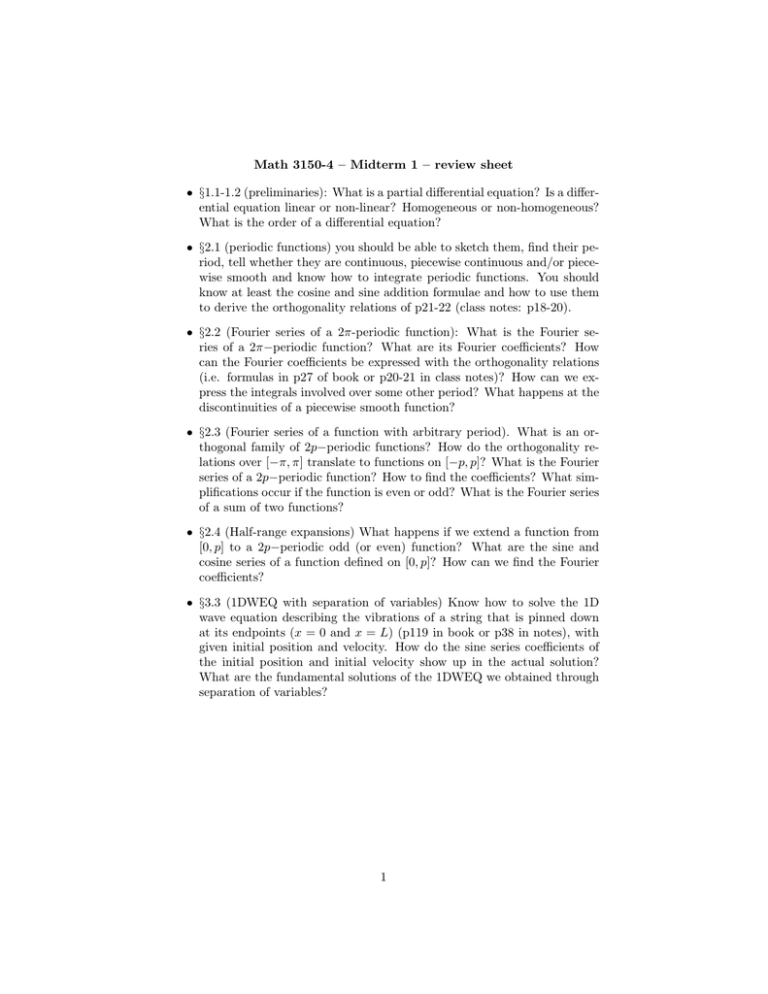
Math 3150-4 – Midterm 1 – review sheet • §1.1-1.2 (preliminaries): What is a partial differential equation? Is a differential equation linear or non-linear? Homogeneous or non-homogeneous? What is the order of a differential equation? • §2.1 (periodic functions) you should be able to sketch them, find their period, tell whether they are continuous, piecewise continuous and/or piecewise smooth and know how to integrate periodic functions. You should know at least the cosine and sine addition formulae and how to use them to derive the orthogonality relations of p21-22 (class notes: p18-20). • §2.2 (Fourier series of a 2π-periodic function): What is the Fourier series of a 2π−periodic function? What are its Fourier coefficients? How can the Fourier coefficients be expressed with the orthogonality relations (i.e. formulas in p27 of book or p20-21 in class notes)? How can we express the integrals involved over some other period? What happens at the discontinuities of a piecewise smooth function? • §2.3 (Fourier series of a function with arbitrary period). What is an orthogonal family of 2p−periodic functions? How do the orthogonality relations over [−π, π] translate to functions on [−p, p]? What is the Fourier series of a 2p−periodic function? How to find the coefficients? What simplifications occur if the function is even or odd? What is the Fourier series of a sum of two functions? • §2.4 (Half-range expansions) What happens if we extend a function from [0, p] to a 2p−periodic odd (or even) function? What are the sine and cosine series of a function defined on [0, p]? How can we find the Fourier coefficients? • §3.3 (1DWEQ with separation of variables) Know how to solve the 1D wave equation describing the vibrations of a string that is pinned down at its endpoints (x = 0 and x = L) (p119 in book or p38 in notes), with given initial position and velocity. How do the sine series coefficients of the initial position and initial velocity show up in the actual solution? What are the fundamental solutions of the 1DWEQ we obtained through separation of variables? 1
